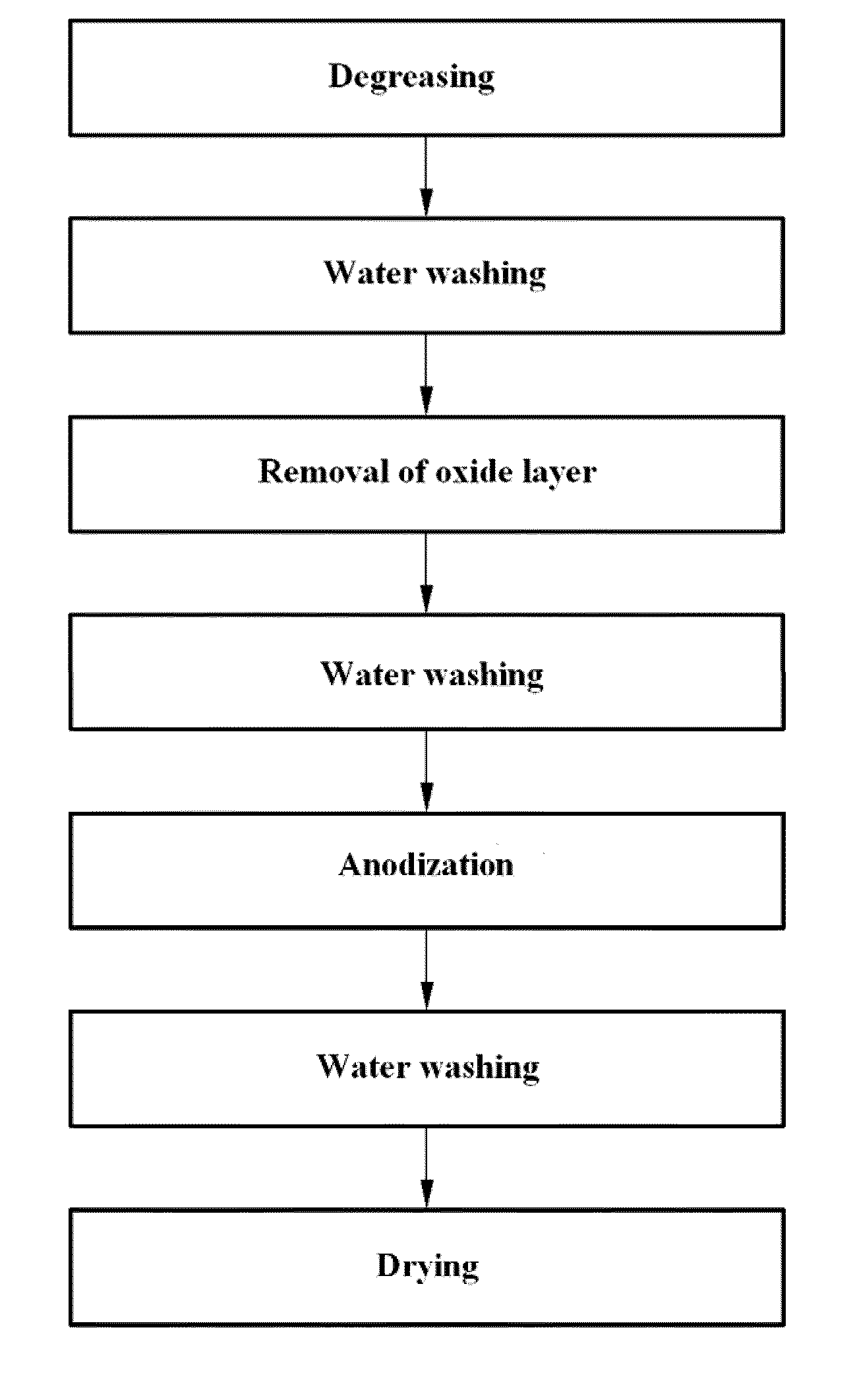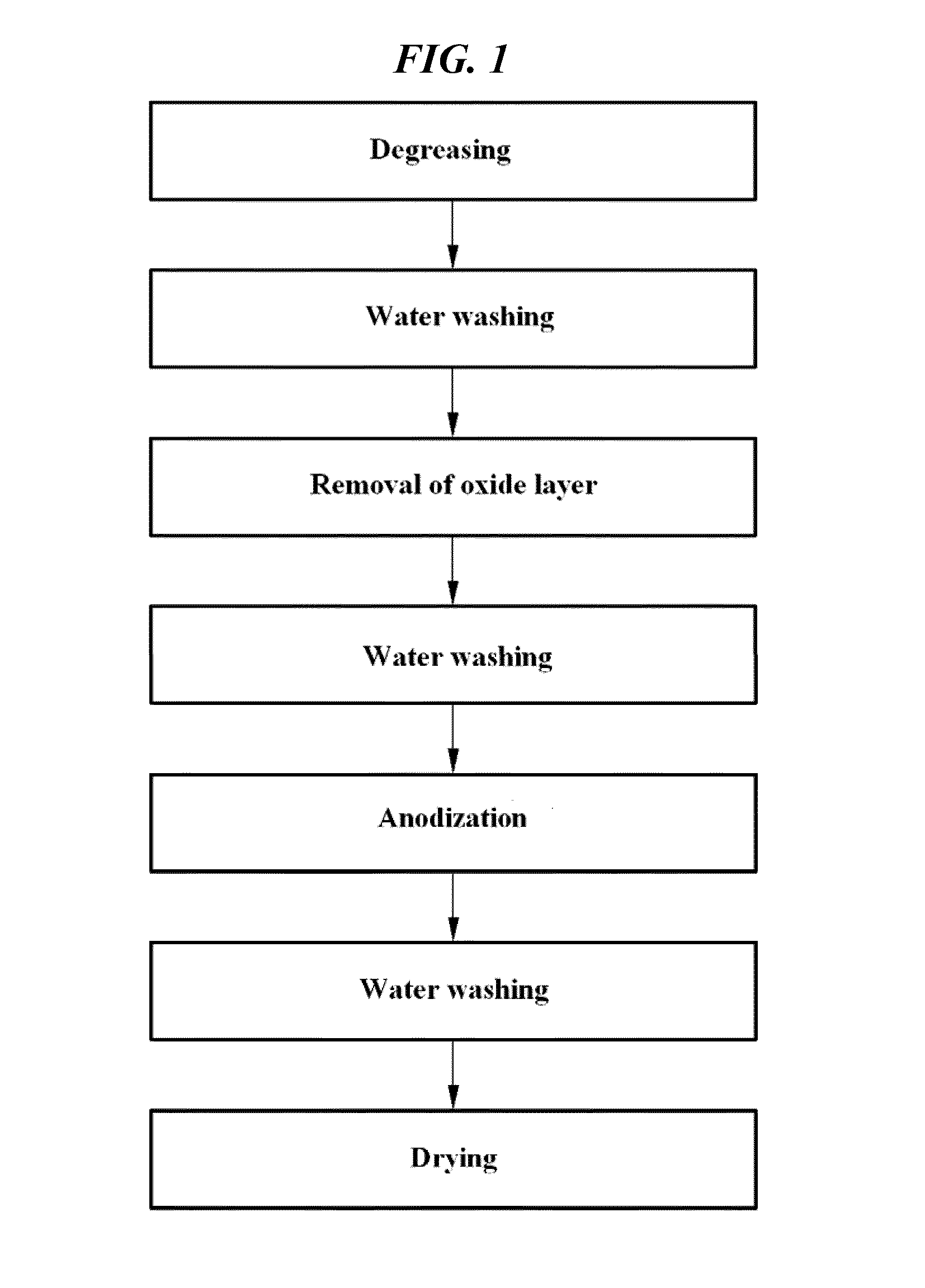Method for surface treatment of magnesium or magnesium alloy by anodization
- Summary
- Abstract
- Description
- Claims
- Application Information
AI Technical Summary
Benefits of technology
Problems solved by technology
Method used
Image
Examples
Embodiment Construction
[0023]Exemplary embodiments of the present invention will now be described in greater detail with reference to the accompanying drawings. These embodiments are provided so that this disclosure will fully convey the scope of the invention to those skilled in the art. Accordingly, the present invention may be embodied in many different forms and should not be construed as limited to the embodiments set forth herein.
[0024]FIG. 2 is a flow chart illustrating a surface treatment method by anodization according to the present invention. Referring to FIG. 2, the method of the present invention comprises alkaline degreasing (S10), microarc plasma anodization (S20) and drying (S30). Water washing (S12) is performed between the alkaline degreasing (S10) and the microarc plasma anodization (S20). Another water washing (S22) is performed between the microarc plasma anodization (S20) and the drying (S30).
[0025]In the step of alkaline degreasing (S10), magnesium or a magnesium alloy as a base mat...
PUM
| Property | Measurement | Unit |
|---|---|---|
| Density | aaaaa | aaaaa |
| Density | aaaaa | aaaaa |
| Density | aaaaa | aaaaa |
Abstract
Description
Claims
Application Information
 Login to View More
Login to View More - R&D
- Intellectual Property
- Life Sciences
- Materials
- Tech Scout
- Unparalleled Data Quality
- Higher Quality Content
- 60% Fewer Hallucinations
Browse by: Latest US Patents, China's latest patents, Technical Efficacy Thesaurus, Application Domain, Technology Topic, Popular Technical Reports.
© 2025 PatSnap. All rights reserved.Legal|Privacy policy|Modern Slavery Act Transparency Statement|Sitemap|About US| Contact US: help@patsnap.com



